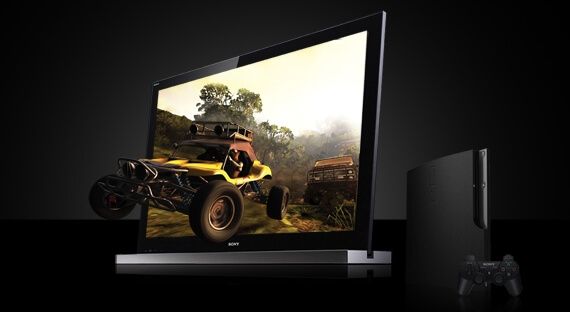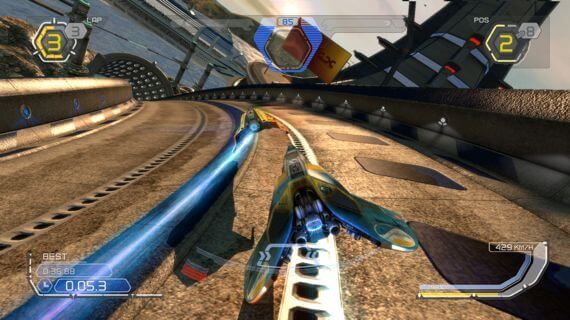With the excitement surrounding Nintendo's 3DS and Sony's PlayStation 3 lineup featuring 3D titles, one may think that the next big thing in gaming will be the proliferation of 3D gaming. Nintendo thinks so highly of its 3D tech that it has priced the 3DS at $249.99, which is more than the price of certain home consoles not named the PlayStation 3. Sony plans on releasing at least 35 games over the next year with 3D as a viewing option, including big titles such as Killzone 3 and Uncharted 3: Drake's Deception. These two companies are clearly invested in the idea that the public will not only accept, but will crave 3D gaming. In my opinion, they couldn't be more wrong.
At last year's E3 and San Diego Comic-Con, I played several Sony PS3 titles in 3D, but unfortunately the monitors in use appeared to be LED televisions, which do not display 3D terribly well. But since I was in the market for a new television and the top models come with 3D as a feature, I recently purchased Samsung's top-of-the-line 63-inch plasma 3D television. With my new toy, I've been able to try out some 3D gaming and my experience has led me to believe that this technology, in its current state, has no chance to succeed.
Many people have asserted that 3D will never take off in the home because gamers would need to wear 3D glasses. That is why the 3DS is not typically denigrated in the same manner and why many people say they will wait for glasses-free 3D televisions. But the reality is the glasses are not that obtrusive. Sure, you'll have to worry about batteries or recharging the glasses if you have an active shutter system (which is the only high-def option currently available), and the glasses do darken the picture somewhat. But these really are minor quibbles, as they do not hinder the functionality of the technology. And according to at least one study, gamers are not totally adverse to the idea of 3D glasses, provided they add to the viewing experience.
The biggest barrier for this technology is that using it for more than an hour (or in some cases even less time) causes tremendous eye strain and headaches. If you are like me, you likely have lengthy game sessions. I tried several games in different 3D modes on both the PlayStation 3 and Xbox 360 and while the games generally looked great, the experience was not one I'd often seek to repeat.
The first game I fired up was Call of Duty: Black Ops on the Xbox 360. Yes, Microsoft has not really pushed this perk, but I was curious to see how 3D would look in what is the most popular FPS series. My initial impressions were amazement. The environment took on a heightened sense of reality and the trees, vehicles, and enemies seemed much more vibrant. Using the scope on my gun created an impressive glass-tube visual, which I had not noticed in the 2D version. However, the cumulative effects of these details created a very "busy" screen, which became headache-inducing over time. I built up a tolerance to this effect, but became convinced that playing this title in 3D for more than an hour could be torture on my eyes.
Microsoft never touted 3D on its console, so I didn't want to give up on what may have not been a representative experience of 3D. So during my next session, I decided to try out a few PS3 games. As I booted up the first title, this ominous warning was presented:
Some people may experience discomfort (such as eye strain, eye fatigue or nausea) while watching 3D video images or playing stereoscopic 3D games on 3D televisions. If you experience such discomfort, you should immediately discontinue use of your television until the discomfort subsides.
SCEA recommends that all viewers take regular breaks while watching 3D video or playing stereoscopic 3D games. The length and frequency of necessary breaks may vary from person to person. Please take breaks that are long enough to allow any feelings of discomfort to subside. If symptoms persist, consult a doctor.
The vision of young children (especially those under six years old) is still under development. SCEA recommends that you consult your doctor (such as a pediatrician or eye doctor) before allowing young children to watch 3D video images or play stereoscopic 3D games. Adults should supervise young children to ensure they follow the recommendations listed above.
I wanted to test Samsung's 2D to 3D conversion tool to see if it would possibly place less stress on my eyes. With movies, this effect didn't produce true 3D, but it did add a little more depth without causing any discomfort. For this test, I grabbed one of my favorite PS3 games, Infamous, and started cleaning up the streets of vermin. After two hours of climbing buildings and performing high-flying stunts, I started to feel a little queasy, which is a sensation I have rarely experienced over the course of my life. Once I turned off the game and stood up, dizziness set in and my balance was off for the next 15 minutes or so.
Thinking it may have been a one-time event (admittedly, I had consumed a couple of beers, which is verboten while playing in 3D), I used the conversion effect a week later while playing the entire Lair of the Shadow Broker DLC for Mass Effect 2. While no stomach-churning symptoms arose, the effect again brought back that uncomfortable eye-fatigue feeling.
Apparently, this is not something that game developers will be able to eliminate:
3-D screens and glasses create the illusion of depth by showing different images to each eye. That simulates the way objects that are at different distances in real life appear in slightly different places in each eye's field of view.
That's enough for most of us to perceive a scene as having depth. But our eyes also look for another depth cue in a scene: They expect to need to focus at different distances to see sharply.
More specifically, our eyes track an approaching object by turning inward, toward our noses. Bring something close enough, and we look cross-eyed. 3D screens also elicit this response when they show something approaching the viewer.
The problem is that as the eyes turn inward, they expect to focus closer. But a screen isn't moving closer, so the eyes have to curb their hard-wired inclination and focus back out. This mismatch between where the eyes think the focus should be and where the screen actually is forces them to work extra hard.
'That causes at least part of the discomfort and fatigue that people are experiencing,' says Martin Banks, an optometry professor at University of California, Berkeley.
Glasses-free 3D does not seem to be a cure for this problem. There are already reports of the 3DS causing similar symptomology. Even our very own Christian Spicer and Phillipe Bosher both found the 3D effect displayed by the 3DS to be uncomfortable during their hands-on time with the device. Perhaps that is why sales of new glasses-free televisions in Japan are already underperforming.
Interestingly, I have never encountered any of the above issues while watching movies or television shows in 3D. This likely has to do with the way the 3D effects are used in film, as studios have learned over the years how to minimize the negative effects of 3D viewing:
"Moviemakers do hold back on 3-D effects to minimize eyestrain. 'Avatar' avoided gimmicks such as objects suddenly appearing to jut out of the screen. Filmmakers also try to make sure that the most significant part of a scene, such as the lead actor's face, appear to be at the same distance as the screen. That way, the eyes are less confused."
Because of faster onscreen action and the smaller screen sizes of televisions and the 3DS, game developers may not be able to utilize these film techniques. Even if they can, the typical hardcore gamer is not going to want to take breaks so that his or her eyes can recover. One has to wonder why the gaming industry continues to push this technology, which seems dead on arrival.
Own a 3D TV and tried 3D gaming? Played the 3DS in 3D mode? Tell us about your experiences in the third dimension.
Source: Associated Press



